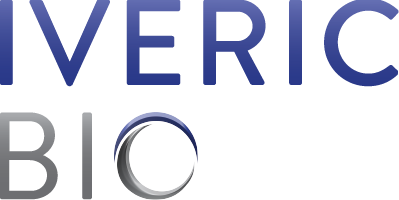Iveric Bio Announces Successful Advancement of LCA10 Minigene Program and Expansion of Orphan Gene Therapy Portfolio with USH2A-Related Inherited Retinal Diseases Program
The Company also announced today that it is expanding its gene therapy portfolio by entering into a sponsored research agreement with
“Moving our LCA10 program forward and expanding our pipeline with the addition of a minigene research program for USH2A further validates our commitment to develop innovative and life changing gene therapies for patients with orphan inherited retinal diseases,” stated
“The results from our LCA10 minigene program are encouraging for the prospect of using AAV vectors for the treatment of retinal diseases caused by gene mutations that exceed the transgene packaging capacity of conventional AAV vectors,” stated
IVERIC bio plans to update investors on all of the Company’s gene therapy programs at its upcoming Gene Therapy R&D Investor Day scheduled for
About Minigene Therapy
The use of minigene therapy as a therapeutic strategy seeks to deliver a smaller but functional portion of the larger gene packaged into a standard-size AAV delivery vector commonly used in ocular gene therapy. Research in this evolving area of gene therapy is led by Drs.
About Leber Congenital Amaurosis Type 10
Leber Congenital Amaurosis type 10 (LCA10), the most common type of LCA, is an orphan inherited retinal disease caused by mutations in the CEP290 gene. Mutations in CEP290 lead to severe bilateral vision loss in early childhood, incapacitating affected individuals.
About USH2A-Related Inherited Retinal Diseases
USH2A-related inherited retinal diseases (IRDs) are a group of orphan IRDs associated with mutations to the USH2A gene. The USH2A gene encodes a protein, usherin, which is believed to be important in the development and maintenance of cells in the retina and the inner ear. USH2A-related IRDs include retinitis pigmentosa associated with Usher syndrome type 2A and USH2A-associated autosomal recessive nonsyndromatic retinitis pigmentosa. Usher syndrome type 2a is an autosomal recessive genetic condition characterized by hearing loss from birth and progressive vision loss, due to retinitis pigmentosa, that begins in adolescence or adulthood. USH2A-associated autosomal recessive nonsyndromatic retinitis pigmentosa is a genetic condition that manifests as vision loss without associated hearing loss. The collaborative research program between IVERIC bio and UMMS seeks to develop an AAV deliverable, mutation independent, minigene treatment option for the vision loss associated with USH2A mutations.
About IVERIC bio
IVERIC bio is a biotechnology company with a focus on the discovery and development of novel gene therapy solutions to treat orphan inherited retinal diseases with unmet medical needs. Vision is Our Mission. For more information on the Company’s gene therapy and other programs, please visit www.ivericbio.com.
Forward-looking Statements
Any statements in this press release about the Company’s future expectations, plans and prospects constitute forward-looking statements for purposes of the safe harbor provisions under the Private Securities Litigation Reform Act of 1995. Forward-looking statements include any statements about the Company’s strategy, future operations and future expectations and plans and prospects for the Company, and any other statements containing the words “anticipate,” “believe,” “estimate,” “expect,” “intend”, “goal,” “may”, “might,” “plan,” “predict,” “project,” “prospect,” “target,” “potential,” “will,” “would,” “could,” “should,” “continue,” and similar expressions. In this press release, the Company’s forward looking statements include statements about the implementation of its strategic plan, including its focus on developing gene therapies, the timing, progress and results of clinical trials and other research and development activities, the potential utility of its product candidates and the potential for its business development strategy, including any potential in-license or acquisition opportunities. Such forward-looking statements involve substantial risks and uncertainties that could cause the Company’s research and development programs, future results, performance or achievements to differ significantly from those expressed or implied by the forward-looking statements. Such risks and uncertainties include, among others, those related to the initiation and the conduct and design of research programs, preclinical studies and clinical trials, availability of data from these activities, reliance on university collaborators and other third parties, establishment of manufacturing capabilities, expectations for regulatory matters, need for additional financing and negotiation and consummation of in-license and/or acquisition transactions and other factors discussed in the “Risk Factors” section contained in the quarterly and annual reports that the Company files with the
ISEE-G
View source version on businesswire.com: https://www.businesswire.com/news/home/20190723005210/en/
Source:
Investors:
IVERIC bio
Kathy Galante, 212-845-8231
Vice President, Investor Relations and Corporate Communications
kathy.galante@ivericbio.com
or
Media:
SmithSolve
Alex Van Rees, 973-442-1555 ext. 111
alex.vanrees@smithsolve.com
